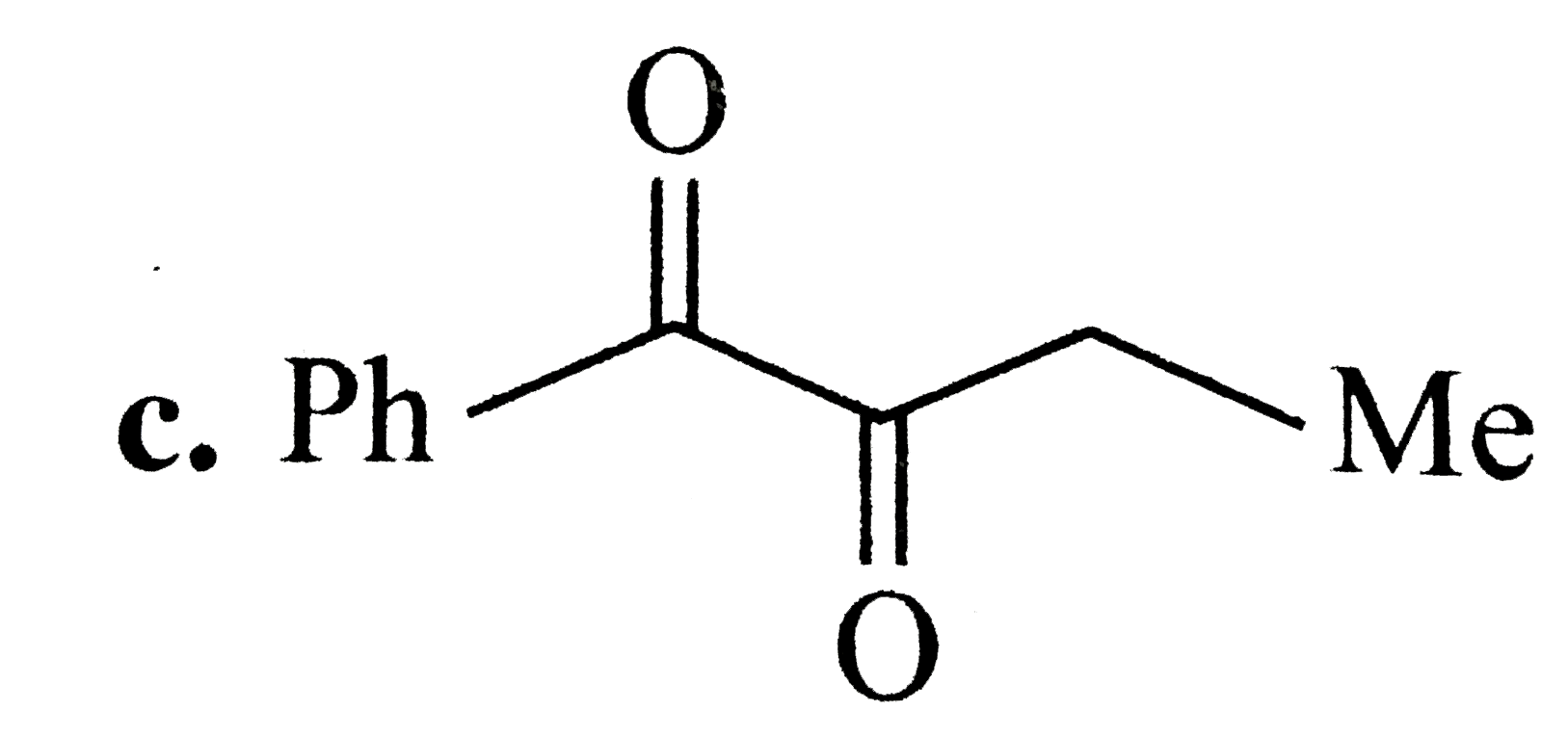The reaction of CH3MgBr on dry ice followed by acid hydrolysis gives
acetic acid
formic acid
acetone
acetaldehyde
The correct Answer is:A
To solve the question regarding the reaction of CH₃MgBr (a Grignard reagent) with dry ice followed by acid hydrolysis, we can break it down into a series of steps:
1. Identify the Reactants:
The reactants in this reaction are CH₃MgBr (methylmagnesium bromide) and dry ice (solid carbon dioxide, CO₂).
2. Understanding the Grignard Reagent:
CH₃MgBr is a Grignard reagent, which means it has a carbon atom that is nucleophilic (electron-rich) due to the presence of the magnesium atom. The CH₃ group carries a partial negative charge, while the MgBr part carries a partial positive charge.
3. Reaction with Dry Ice:
When CH₃MgBr reacts with dry ice, the nucleophilic CH₃ group attacks the electrophilic carbon in CO₂. This results in the formation of a carboxylate intermediate:
\(
CH₃MgBr + CO₂ \rightarrow CH₃C(=O)O^{-}MgBr^{+}
\)
Here, CH₃C(=O)O− is the carboxylate ion, and MgBr is the magnesium bromide ion.
4. Acid Hydrolysis:
The next step is acid hydrolysis. When the carboxylate ion is treated with an acid (like H₂O or HCl), it protonates the carboxylate ion to form a carboxylic acid:
\(
CH₃C(=O)O^{-} + H^{+} \rightarrow CH₃C(=O)OH
\)
The product formed here is CH₃C(=O)OH, which is ethanoic acid (or acetic acid).
5. Final Product:
The final product of the reaction is therefore ethanoic acid, which can also be represented as CH₃COOH.
Conclusion:
The reaction of CH₃MgBr on dry ice followed by acid hydrolysis yields ethanoic acid (acetic acid).
The reactants in this reaction are CH₃MgBr (methylmagnesium bromide) and dry ice (solid carbon dioxide, CO₂).
CH₃MgBr is a Grignard reagent, which means it has a carbon atom that is nucleophilic (electron-rich) due to the presence of the magnesium atom. The CH₃ group carries a partial negative charge, while the MgBr part carries a partial positive charge.
When CH₃MgBr reacts with dry ice, the nucleophilic CH₃ group attacks the electrophilic carbon in CO₂. This results in the formation of a carboxylate intermediate:
\(
CH₃MgBr + CO₂ \rightarrow CH₃C(=O)O^{-}MgBr^{+}
\)
Here, CH₃C(=O)O− is the carboxylate ion, and MgBr is the magnesium bromide ion.
The next step is acid hydrolysis. When the carboxylate ion is treated with an acid (like H₂O or HCl), it protonates the carboxylate ion to form a carboxylic acid:
\(
CH₃C(=O)O^{-} + H^{+} \rightarrow CH₃C(=O)OH
\)
The product formed here is CH₃C(=O)OH, which is ethanoic acid (or acetic acid).
The final product of the reaction is therefore ethanoic acid, which can also be represented as CH₃COOH.
The reaction of CH₃MgBr on dry ice followed by acid hydrolysis yields ethanoic acid (acetic acid).
Topper's Solved these Questions
- CARBOXYLIC ACIDS AND THEIR DERIVATIVESBOOK - OP TANDONCHAPTER - CARBOXYLIC ACIDS AND THEIR DERIVATIVESEXERCISE - Integer
4 Videos
- CARBOXYLIC ACIDS AND THEIR DERIVATIVESBOOK - OP TANDONCHAPTER - CARBOXYLIC ACIDS AND THEIR DERIVATIVESEXERCISE - Brain storming problems
30 Videos
- BASIC PRINCIPLES OF ORGANIC COMPOUNDS (MECHANISM OF ORGANIC REACTIONS)BOOK - OP TANDONCHAPTER - BASIC PRINCIPLES OF ORGANIC COMPOUNDS (MECHANISM OF ORGANIC REACTIONS)EXERCISE - SINGLE INTEGER ANSWER TYPE QUESTIONS
4 Videos
- CHEMICAL KINETICSBOOK - OP TANDONCHAPTER - CHEMICAL KINETICSEXERCISE - LINKED COMPRESHENSION TYPE QUESTIONS ( SECTION-VI)
4 Videos
Similar Questions
Knowledge Check
Methyl oxirane on reaction with CH3MgBr, followed by hydrolysis, gives alcohol. By which of the following mechanisms does the reaction proceed ?
ASN1BSN2CSNiDSEBenzonitrile on reaction with C2H5MgBr, followed by hydrolysis, gives.
A B
B C
C D
D
The product formed as a result of reaction of CH3 MgBr and CO2 on further hydrolysis gives
ACH3 COOHBHCOOHCoxalic acidDacetic acid
The reaction of CH3MgBr with acetone and hydrolysis of the resulting product gives
View SolutionAddition of Grignard reagents to dry ice followed by hydrolysis gives carboxylic acids while that of organolithium compounds under similar conditions gives ketones. Explain.
View SolutionAddition of Grignard reagents to dry ice followed by hydrolysis gives carboxylic acids whereas that of organolithium compounds under similar conditions give ketones. Explain.
View SolutionWhich of the following compounds when treated with CH3MgI in dry ether followed by the hydrolysis, will give Propan-2-ol ?
View SolutionWhich of the following would give tertiary alcohol when it reacts with an excess of CH3MgBr followed by hydrolysis
View Solution
